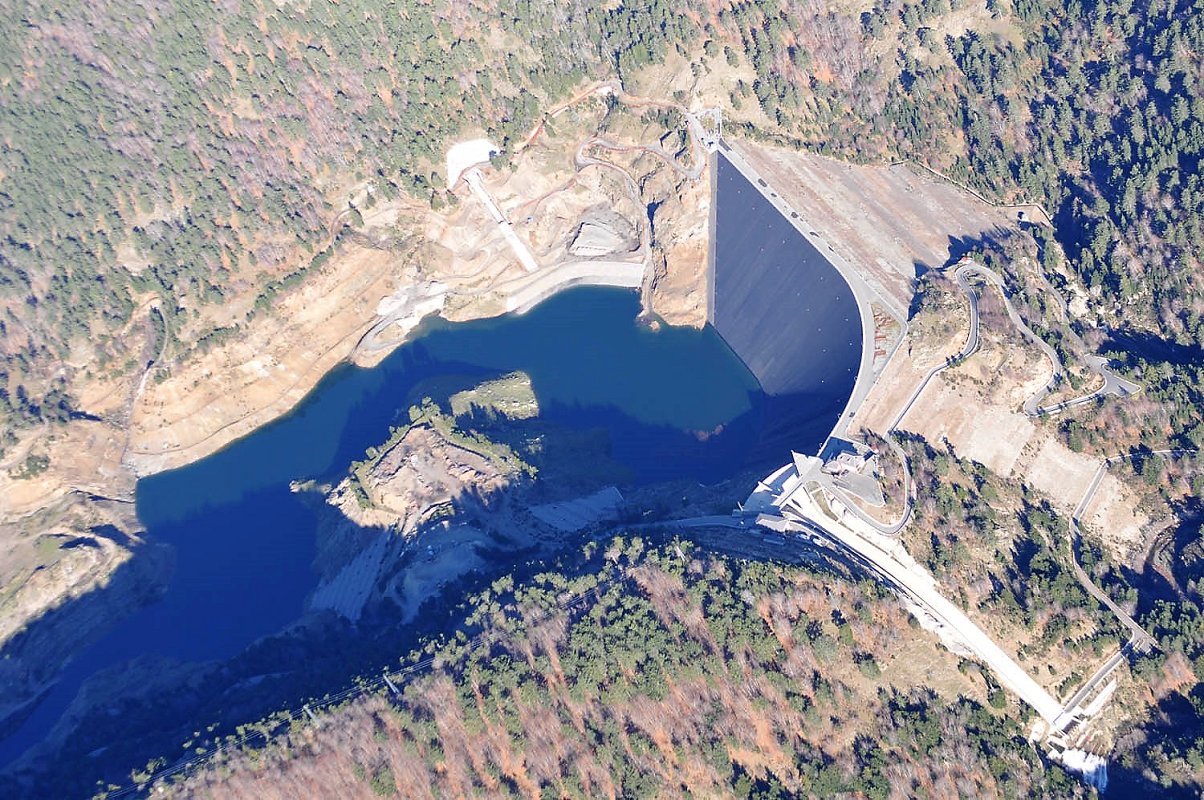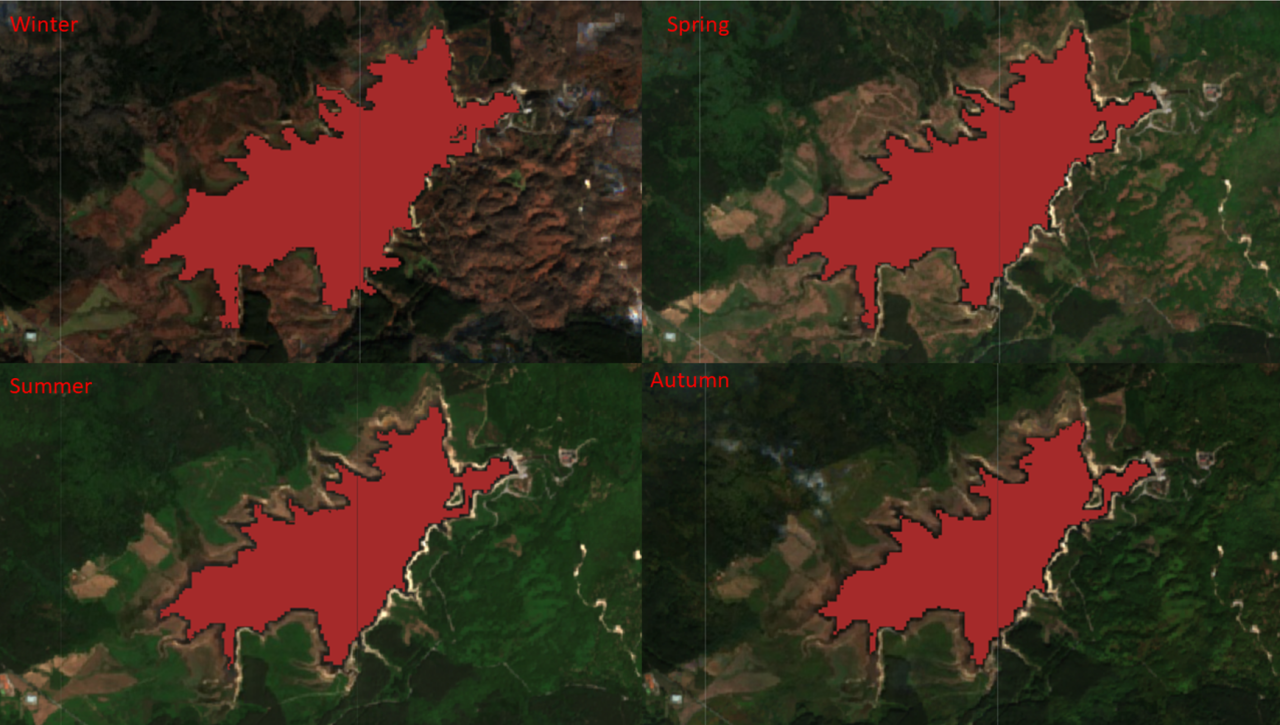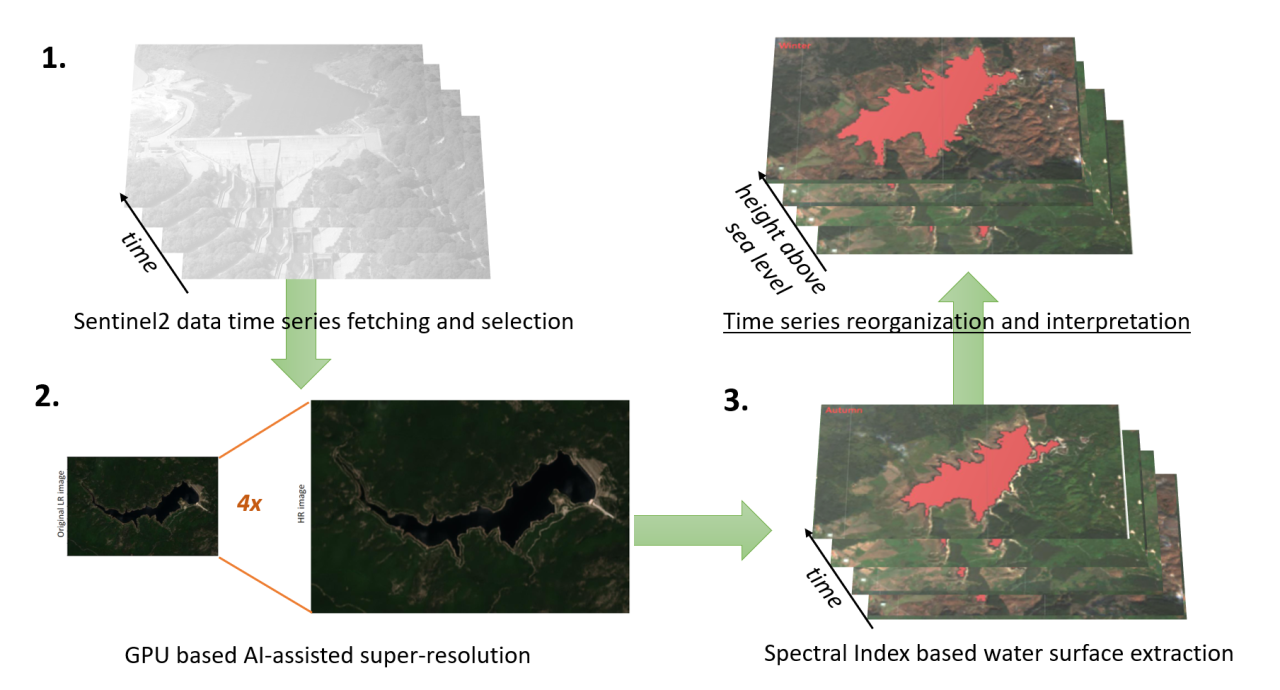AI and HPC for Reservoir Monitoring
This experiment allowed designing a new service that takes advantage of HPC to process ESA Sentinel-2 optical imagery (since June 2015) to give a new insights to water resource managers on their assets, by remotely monitoring the surface extent of reservoirs and building an evolving 3D model of the reservoir itself. Satellite data will play a key role in enabling a continuous monitoring service over time at a negligible cost, as continuous (i.e., every few days) monitoring is in place.
SECTOR: Environment
TECHNOLOGY USED: HPC, AI
COUNTRY: Italy
The challenge
Aresys has identified the entry into the environmental management sector, which is largely composed of publicly owned local agencies, as a strategic direction for the company since it has the potential to provide added value services, based on its long-term expertise in satellite data processing, while putting it ahead of competitors in that sector. In particular, high-performance data analytics of optical satellite imagery can be used to develop a novel approach for the continuous monitoring of water reservoirs, which due to water shortages, periods of drought and extreme weather events is a critical issue for all European countries.
The systematic exploitation of optical imagery from the Sentinel-2 constellation, belonging to the EU Copernicus Programme, assures both the availability of new measurements every five days and the access to historical datasets starting in 2015. Moreover, these datasets are provided at no additional charge, making them the ideal data source to lower overall monitoring costs compared to direct access to reservoir sites.
However, the amount of data and the required processing sequence calls for on-demand HPC resources to build the added value information required by customers.
The solution
Aresys designed and developed a new service where Sentinel-2 optical images play a key role to identify reservoir water surface variation over time, without the need for any additional in-situ measurements. The water surface is estimated based on proper geometric and radiometric processing where photogrammetry and image processing are assisted by AI. The seasonal variations of the reservoir water storage allow the definition of a continuously evolving 3D model of the reservoir itself. Furthermore, the availability of historical datasets makes the 3D model available as soon as a new reservoir is monitored, making it a clear competitive advantage with respect to traditional in-situ measurements.
Sentinel-2 data resolution is addressed by taking advantage of the latest Deep Learning results, to improve the accuracy of the overall water body estimation. The selected AI-based super-resolution technique, although computationally expensive, does not need a training data library to be effective. The exploitation of HPC resources is mandatory for the AI-assisted processing steps, and to provide the starting 3D reservoir model based on the analysis of the whole past time series in a timely manner.
Moreover, within the same image processing pipeline, additional products such as the detection of variations of the near basin shores, e.g., for observation of results of wildfires or deforestation, and of the basin surface conditions, e.g., for the detection of massive floating debris after abnormal weather conditions, can be provided as additional services.
Business impact, Social impact, Environmental impact
Smart monitoring and the space economy are both growing sectors in Europe. Moreover, as significant risks are caused by water scarcity conditions and drought events, especially in southern Europe, better management of freshwater has a significant social and environmental impact.
The new Aresys SaaS service targets customers involved in the freshwater management cycle allowing them to improve the management of their reservoirs, thus reducing the threat of water scarcity in Europe.
The ability to exploit on-demand computing power from HPC providers makes the business suitable for a consulting SME such as Aresys, allowing it to sustain a highly variable number of customers while providing historical data analysis promptly.
Aresys plans to sell the demonstrated service to 20% of Italian reservoirs of which there are about 110 according to the Italian Dam Registry, with a revenue of €550,000 for the first year. The value of the addressable European overall market, i.e. the current expenditures for reservoir monitoring, could be estimated at more than €200 million.
Benefits
- A novel and highly profitable SaaS service for reservoir monitoring is offered by Aresys. The exploitation of on-demand HPC resources allows for scaling up the offer and handling many customers efficiently.
- Sorical receives improved knowledge about the evolution of the 3D model for the experiment’s monitored reservoirs, with the ability to opt for continuous monitoring after the end of this experiment, translating into lower monitoring costs (€15,000 per reservoir).
- A dedicated group for satellite optical data processing and exploitation is established within Aresys (3 remote sensing specialists), taking advantage of new know-how gained in the optical imagery and AI areas.
Organisations involved:
Service Provider: ARESYS
Domain Expert: GGD-DICEA-SAPIENZA
End-user: SORICAL
HPC Expert: CINECA
Partner CINECA is part of the Italian NCC.




